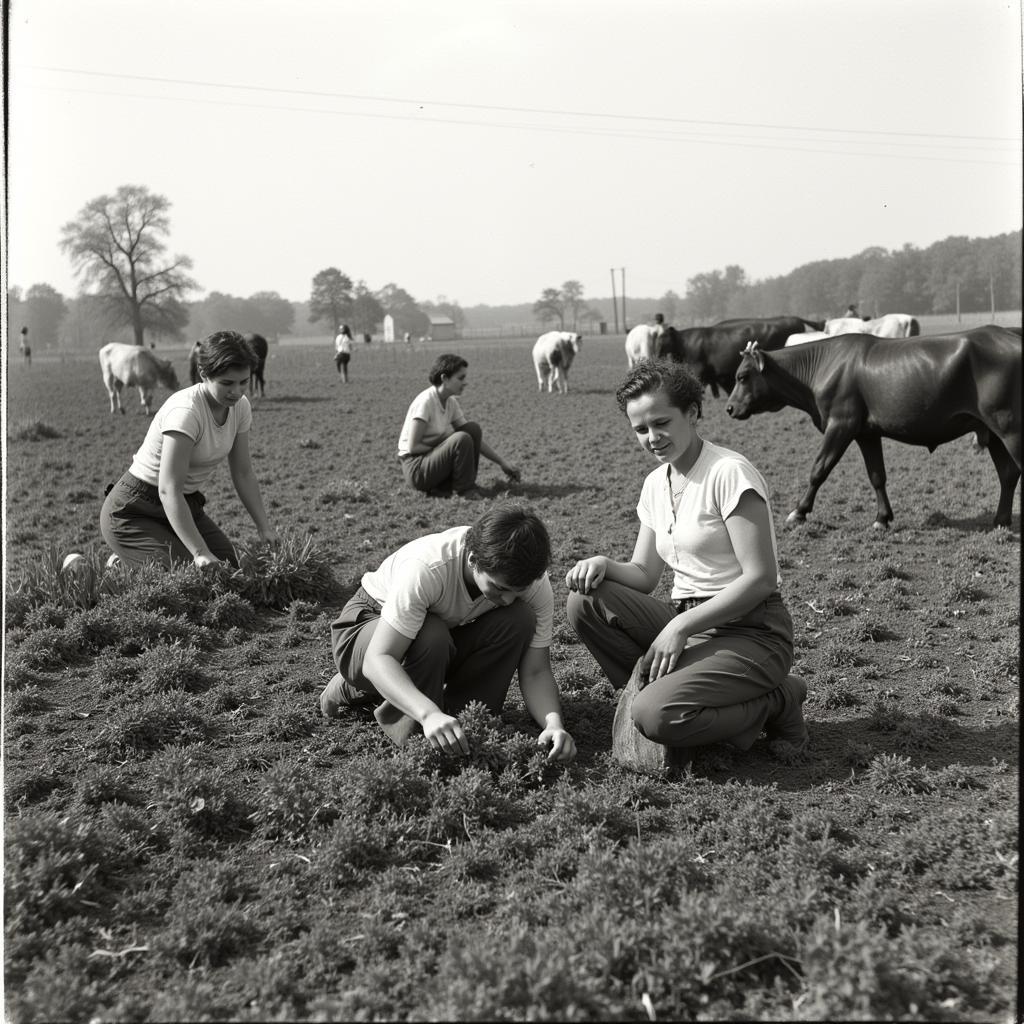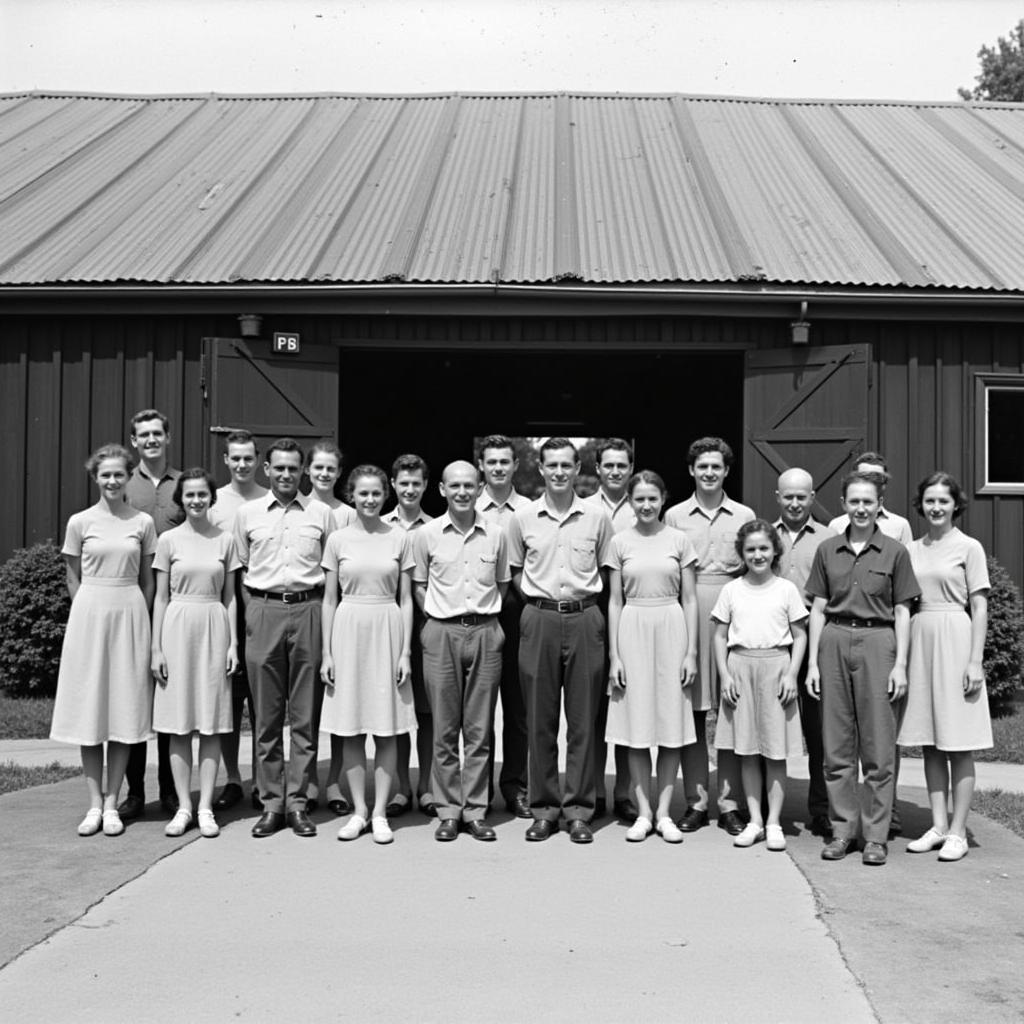The Site Of Camarillo State Hospital Farm holds a unique and often overlooked piece of California history. Once a bustling hub of agricultural activity, the farm played a vital role in the hospital’s self-sufficiency and therapeutic programs. Today, remnants of this past offer a glimpse into a bygone era, raising questions about the hospital’s operations and the lives of those who lived and worked there.
A Look Back at the Camarillo State Hospital Farm’s Purpose
The Camarillo State Hospital, operating from 1936 to 1997, was a significant mental health institution. The farm, established in the early years of the hospital, served multiple purposes. Primarily, it provided a source of food for the hospital’s large population of patients and staff, reducing reliance on outside suppliers and ensuring a degree of self-sufficiency. Beyond its practical function, the farm also played a crucial role in the hospital’s therapeutic approach. Patients were often involved in various farming activities, from planting and harvesting to caring for livestock. This involvement was believed to offer therapeutic benefits, promoting physical activity, fostering a sense of responsibility, and providing a connection to the natural world.
The types of crops grown on the Camarillo State Hospital farm varied depending on the season and the needs of the hospital. Common crops included fruits, vegetables, and grains. The farm also housed livestock, such as cows, pigs, and chickens, providing a source of meat, dairy, and eggs. This diverse agricultural production ensured a balanced diet for the hospital community.
Camarillo State Hospital Farm: Therapy Through Labor
The involvement of patients in farm labor was a core component of the hospital’s treatment philosophy. Occupational therapy was highly valued, and the farm provided a structured environment where patients could engage in meaningful work. These activities were thought to contribute to their overall well-being and recovery. Patients gained practical skills, learned the value of teamwork, and experienced the satisfaction of contributing to the hospital community.
 Patients Working on the Camarillo State Hospital Farm
Patients Working on the Camarillo State Hospital Farm
What happened to the Camarillo State Hospital farm?
With the closure of the hospital in 1997, the farm ceased operations. The land has since been repurposed, with some areas transformed into California State University, Channel Islands. While much of the original farm infrastructure is gone, remnants like old farm buildings and overgrown fields still exist, offering a tangible link to the past.
Uncovering the History of the Camarillo State Hospital Farm
Researching the site of Camarillo State Hospital farm can provide valuable insights into the history of mental health care in California. Examining historical records, photographs, and oral histories can shed light on the farm’s role in the hospital’s daily life and treatment approach. This research can also reveal the experiences of those who lived and worked on the farm, offering a more complete understanding of the hospital’s history.
 Historical Photo of Camarillo State Hospital Farm
Historical Photo of Camarillo State Hospital Farm
Where can I find more information about the Camarillo State Hospital farm?
Local historical societies, libraries, and university archives are excellent resources for information about the Camarillo State Hospital farm. Online databases and digital archives can also provide access to historical documents and photographs related to the hospital and its farm.
“The farm at Camarillo State Hospital wasn’t just about producing food,” says Dr. Emily Carter, a historian specializing in 20th-century mental health care. “It represented a belief in the healing power of nature and the therapeutic value of meaningful work.”
“The farm provided a sense of purpose and routine for many patients,” adds John Miller, a former staff member at the hospital. “It was a place where they could connect with the land and with each other.”
Reclaiming the Past: The Site of Camarillo State Hospital Farm Today
Visiting the former site of the Camarillo State Hospital farm allows for a personal connection to this historical landmark. Exploring the remaining structures and imagining the farm’s bustling past can offer a poignant reflection on the changing approaches to mental health care over time.
In conclusion, the site of Camarillo State Hospital farm stands as a reminder of a significant era in mental health care. Understanding its history provides valuable context for appreciating the evolution of treatment philosophies and the lasting impact of institutions like Camarillo State Hospital.
FAQ
- What was the primary purpose of the Camarillo State Hospital farm? (To provide food and therapeutic opportunities for patients.)
- What types of crops were grown on the farm? (Fruits, vegetables, grains, and livestock were raised.)
- How was the farm involved in patient therapy? (Patients participated in farm labor as occupational therapy.)
- What happened to the farm after the hospital closed? (The land was repurposed, primarily for California State University, Channel Islands.)
- Where can I find more information about the farm’s history? (Local historical societies, libraries, university archives, and online databases.)
- What were the therapeutic benefits believed to be associated with farm work? (Physical activity, sense of responsibility, connection to nature.)
- Are there any visible remnants of the farm today? (Yes, some old farm buildings and overgrown fields still exist.)
Need support? Contact us at Phone Number: 02437655121, Email: [email protected] Or visit us at: Số 298 Đ. Cầu Diễn, Minh Khai, Bắc Từ Liêm, Hà Nội, Việt Nam. We have a 24/7 customer service team.